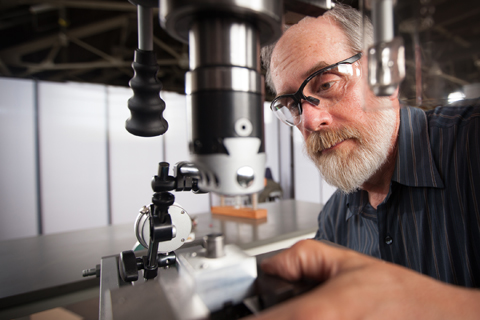Colleges and universities have always been wellsprings of ideas and innovation. Converting those breakthroughs into success in the wider marketplace — where the public can enjoy the benefits — requires planning, strategy and more than a little promotional know-how.
The consortium, the Michigan Tech Transfer Talent Network (or T3N), was created in 2011 to connect entrepreneurs with university tech transfer offices to launch startups or license university technology to established companies. The Michigan Economic Development Corporation funds the consortium to create job opportunities for graduates and positive economic development for the community, the state and the general public.
Opportunity knocks
The University of Michigan (among the top 10 universities in the nation in tech transfer performance) leads the network, which includes Grand Valley State University, Michigan State University, Michigan Technological University, Oakland University, Wayne State University and Western Michigan University. Automation Alley, a technology business association and business accelerator based in Troy, Mich., is also a partner.
OU’s Dorothy Nelson, Ph.D., vice provost for
research, says the multi-university network offers a great opportunity and tremendous community for the University.
Although the University typically had worked alone in the past to commercialize its intellectual properties, Dr. Nelson says that the T3N partnership offers the benefit of having both expertise and “muscle,” thanks to the successful track records of the larger institutions.
“It’s not enough for only the well-resourced institutions of Michigan to push their innovations, if we want to elevate the state’s tech game,” she observes. “As they say, ‘it takes a village,’ and to U-M’s credit they formed a network where we could share best practices and talent. By sharing that entrepreneurial knowledge and expertise, we all will be better off.”
OU currently has 18 issued patents and seven more that are pending, Dr. Nelson says. The first entry from OU into the T3N commercialization pipeline is a patented rapid decoupling technology that holds great promise for military and civilian use (
see sidebar).
Pipeline for progress
Why the keen interest in marketing OU’s technologies? One reason, of course, is to attract more research money from public and private sources. A successful program is always a magnet for further funding, Dr. Nelson observes. It is also the fastest and most efficient way to get innovations out to where more people can benefit from them.
“Sharing intellectual property among scholars — which has been the tradition in academia — is not always benefiting the public; at least not directly,” she says. “The federal government, which funds a lot of research from which technologies are developed, is really trying hard to push these innovations out for the public good. We always hope these innovations will have some benefit to those outside our University community.”
Bringing new ideas and innovation to the marketplace puts the spotlight on the contributing institutions, fortifying a school’s reputation for research and development. This can attract bright, enterprising students to the schools.
“We at OU are fortunate because we are in an area surrounded by industries that are hungry for new technologies,” Dr. Nelson adds. “We have two start-up incubators at OU, one on the main campus and one at OU Macomb, and our administration is very supportive of the tech transfer drive. We’re just in phase one, but we believe OU is well-positioned to succeed.”
by Kevin Knapp

